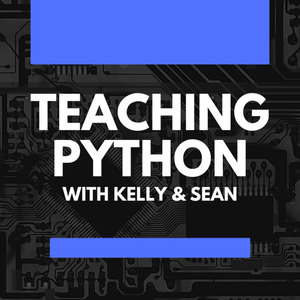In computer science class, understanding concepts and technical jargon is an essential step, especially for new programmers. Making coding achievable (with a positive mindset) is half the battle with keeping kids interested in coding. One tool that can help support students is the "Board of Knowledge." The Board of Knowledge is a visual snapshot of core coding concepts, images, and vocabulary displayed in the classroom in an easily accessible area. It holds and consolidates essential coding information and concepts, aiding in memory retention for students.
This resource is rooted in three learning theories:
Cognitive Load Theory (CLT)
Proposed by John Sweller, the Cognitive Load Theory(CLT) suggests that our working memory is limited. It is an instructional design theory emphasizing how the human brain processes and stores information. When we learn, we must manage this cognitive load to ensure it is not overwhelmed and learning compromised.
The Board of Knowledge lessens cognitive load by providing readily accessible information to the students. Students can quickly reference terms instead of relying solely on memory, allowing them to focus on internalizing essential concepts. Reducing the demands on learners' working memory removes unnecessary pressure from short-term memory. Students can focus on information that needs to move into long-term memory, like the order of the code or the connections, and less on terminology.
Zone of Proximal Development (ZPD)
As conceived by Lev Vygotsky, ZPD expresses the gap between what learners can do without help and what they can achieve with guidance. It is the space between a student's current ability and their potential. In this context, the Board of Knowledge acts as a "scaffolding" tool, often associated with ZPD, offering students a quick reference point that bridges their existing knowledge with new concepts.
Scaffolding is an instructional technique that guides students progressively toward a more robust understanding and, ultimately, greater independence in the learning process. Scaffolding supports students as they build new skills. As the student becomes more proficient in coding, support is gradually removed, allowing the student to work more independently.
By offering students the right tools, resources, or strategies (scaffolding) right when they need them, educators help learners move through their ZPD.
Dual Coding Theory
This learning theory states that verbal and visual data are processed distinctively. It is not about catering to different learning styles (they do not exist) but recognizing that our brain has two primary channels: visual and verbal. While scaffolding supports students in progressing from their current knowledge level to more advanced understanding, this theory suggests that both verbal and visual information are processed differently and that students can benefit from having information presented in both formats. Presenting information in both formats—like pairing terms with diagrams or symbols on the board—can enhance comprehension and recall.
When an instructor uses the most effective learning strategies, students can understand better. Making core concepts consistently visible through tools like the "Board of Knowledge" not only serves as a memory aid but also capitalizes on established educational psychology principles to facilitate more effective learning.
Guard, M. (2019, August 22). How can the Dual Coding Theory be used in the Classroom? [LinkedIn article]. Retrieved October 31, 2023, from https://www.linkedin.com/pulse/how-can-dual-coding-theory-used-classroom-michael-guard/
MindTools. (n.d.). Cognitive Load Theory. Retrieved October 31, 2023, from https://www.mindtools.com/aqxwcpa/cognitive-load-theory
